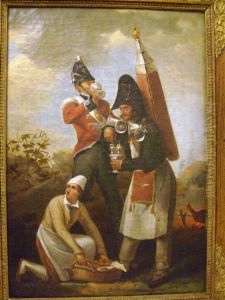Amable Paintings
Amable, full name Jean Amable Amedée Pastelot, was a French painter born in 1774 in Paris, France. He is not as widely recognized as some of his contemporaries, and therefore detailed information about his life and works may be somewhat limited in comparison to other artists of the era. However, Amable was known to be active during a significant period in French history that encompassed the French Revolution, the Napoleonic Wars, and the Restoration period.
Amable's artistic journey began in the late 18th century, a time when the art world in France was dominated by the Académie des Beaux-Arts and the annual Salon, which was the official exhibition of the Académie. He was trained in the neoclassical tradition, which was the prevailing artistic movement of the time, influenced by the art and culture of ancient Greece and Rome. This style emphasized clarity, order, and balance, which were thought to reflect the virtues of the Enlightenment.
Although there are few records of Amable's training and early career, it is known that he worked primarily as a portrait painter. His style was characterized by its elegance and attention to detail, which catered to the tastes of the French bourgeoisie and nobility. He may have received commissions from various patrons, providing him with the opportunity to portray the likenesses of important individuals of his time.
During his career, Amable would have experienced the shifts in artistic trends from neoclassicism to romanticism. However, the extent to which his work reflected the transition between these movements is not well documented. His art may have retained elements of the neoclassical style throughout his life, or he might have adapted to incorporate the more expressive and emotional qualities associated with romanticism.
Amable's death occurred in 1838, by which time the artistic landscape of France had changed considerably. The romantic movement had become more prominent, and the upcoming realist movement was beginning to take shape. While Amable's work did not have a profound impact on the direction of French art, his contributions as a portraitist provided a glimpse into the society and culture of his era.
As with many artists of his time, Amable's legacy is likely preserved in the portraits that remain. These artworks serve as historical documents that capture the visages and fashions of a transformative period in French history. Unfortunately, due to the limited information available, Amable's full impact on the art world and the extent of his oeuvre might not be entirely recognized by contemporary art historians.

